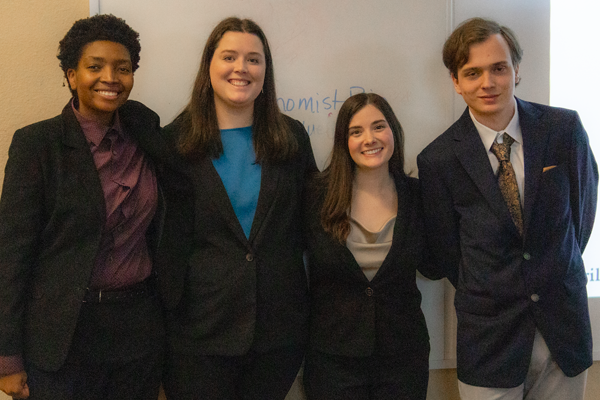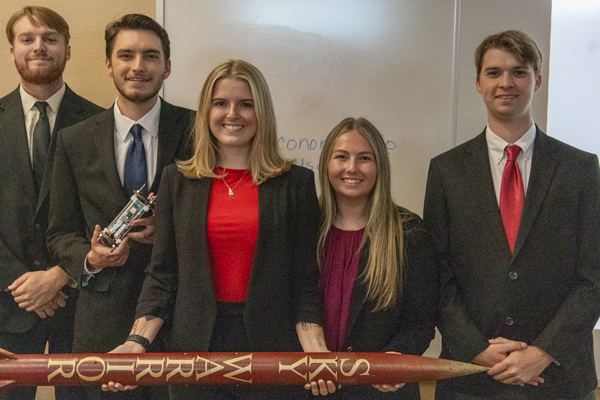Each semester our seniors formally present their projects at the end of term before their professors, peers, mentors and community partners. Following the presentation is a Q&A session from the attendees.
Mechanical Engineering 2025

Thermal Imaging Mobile Module
Presenters: Presenters: Chloe Tutunick, Robert Wilson, Janae Maxwell
Student Consultants: Charles Gardner, John Copsey, Yasmin Buabssi
This project focuses on designing and developing a viable prototype of a portable module equipped to capture thermal images for medical screenings. The system will include a user-friendly mechanical interface, allowing patients to adjust the camera for optimal imaging. Emphasizing patient privacy, accessibility, and comfort, the module will be housed in a secure, climate-controlled room to ensure effective imaging and a positive user experience. The system will be designed to deliver accurate results while maintaining ease of use for both patients and healthcare providers. The primary market includes individuals at risk for illnesses detectable through infrared imaging, such as breast cancer, and healthcare providers who will utilize the technology for diagnostic purposes. Florida State University Panama City and Tallahassee, and the Federal University of Paraná, have agreed to collaborate to bring this innovative concept to life.

Sky Chief
Presenters: Elizabeth Gildersleeve, Haley Jones, Charles Gardner, John Copsey, Jackson Morris Steven-Thomas Dvorak, Seth Edwards, Dylan Bragg, and Hunter Popovich
The SKY CHIEF project follows the guidelines of the 2025 USCLI NASA competition in designing, constructing, and testing both subscale and full-scale rockets for flight and recovery. The rocket will achieve an altitude between 3,500 and 5,500 feet while carrying a payload to transmit between three and eight critical data points. These include temperature at the landing site, apogee reached, battery status, onboard STEMnaut orientation, time of landing, maximum velocity, landing velocity, and calculated STEMnaut survivability. In addition to meeting these requirements, the project incorporates an independent objective of integrating a camera into the rocket to capture in-flight and landing footage. The project emphasizes precise flight performance, payload data transmission, and reliable recovery, aligning with NASA's engineering and safety standards to validate mission success.

